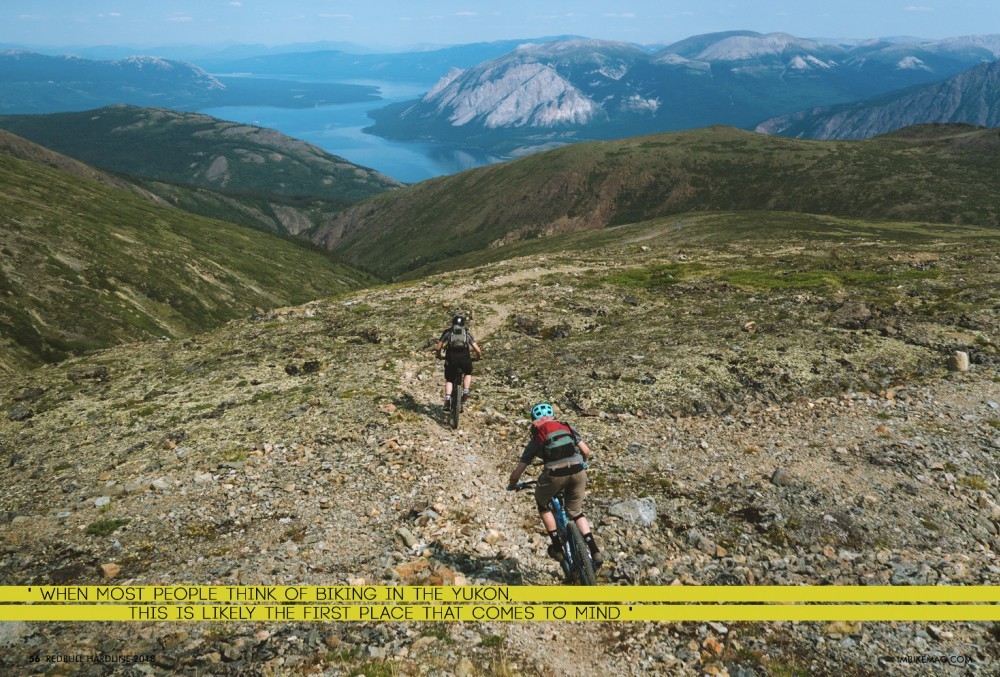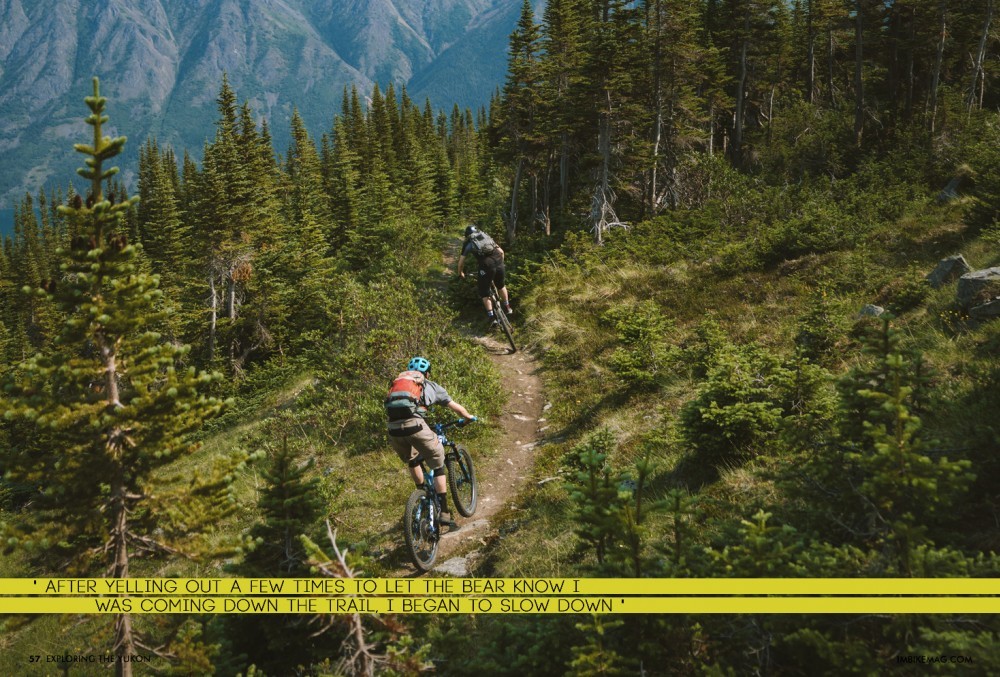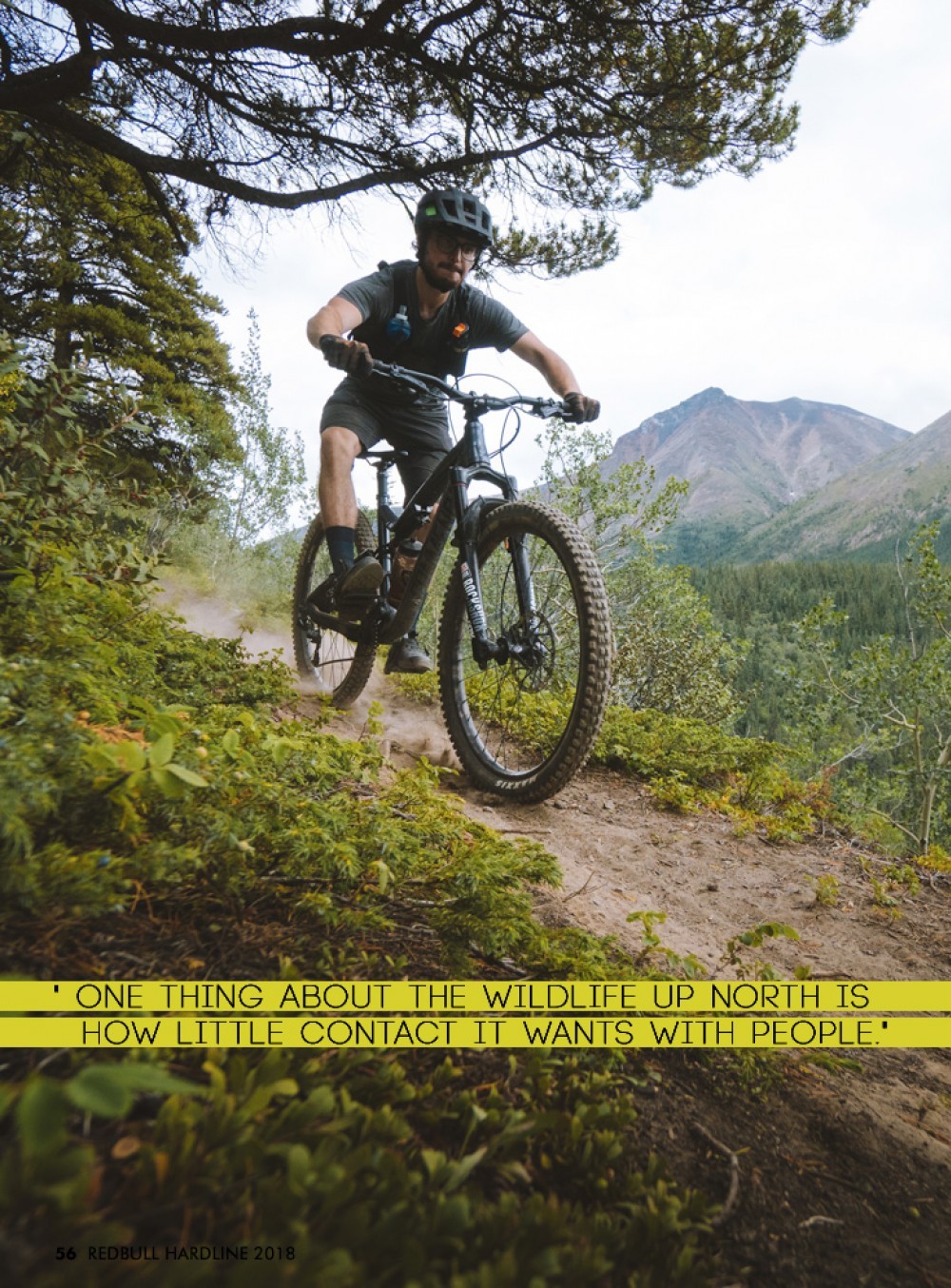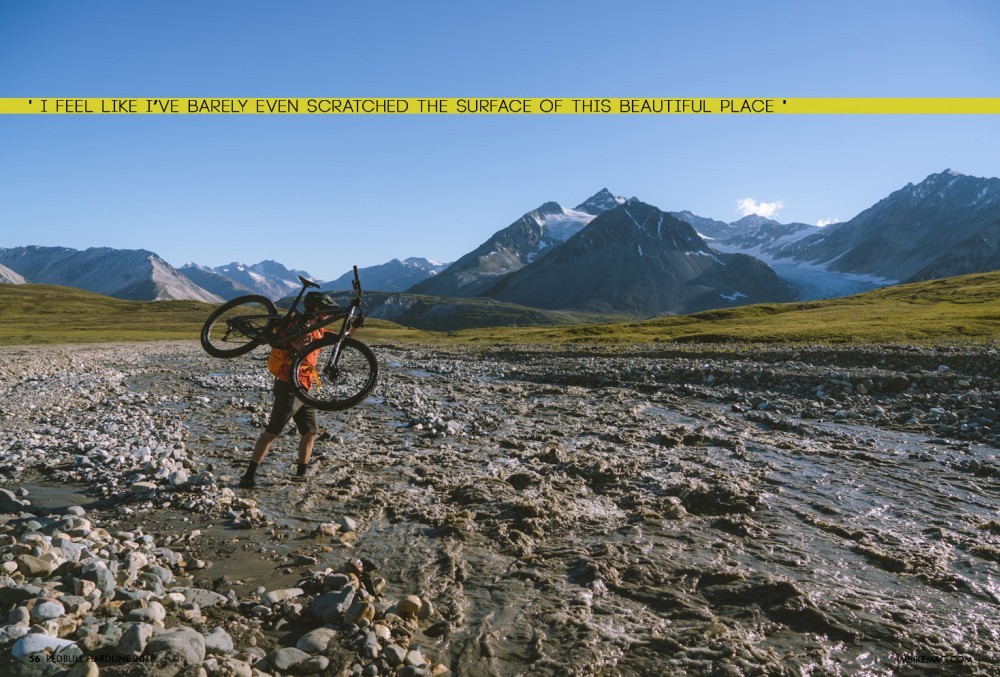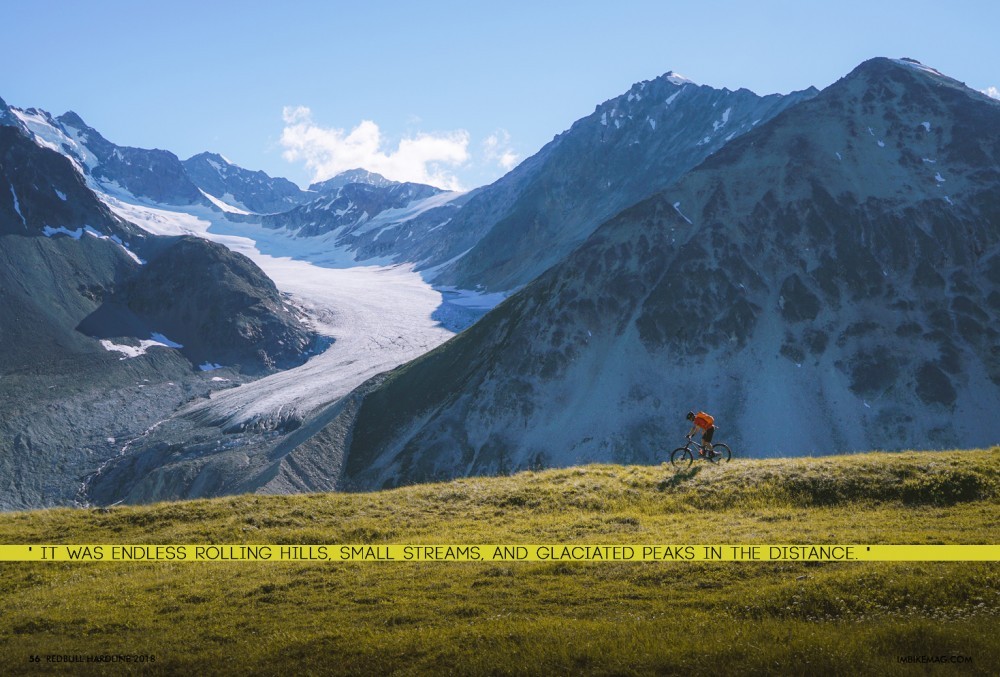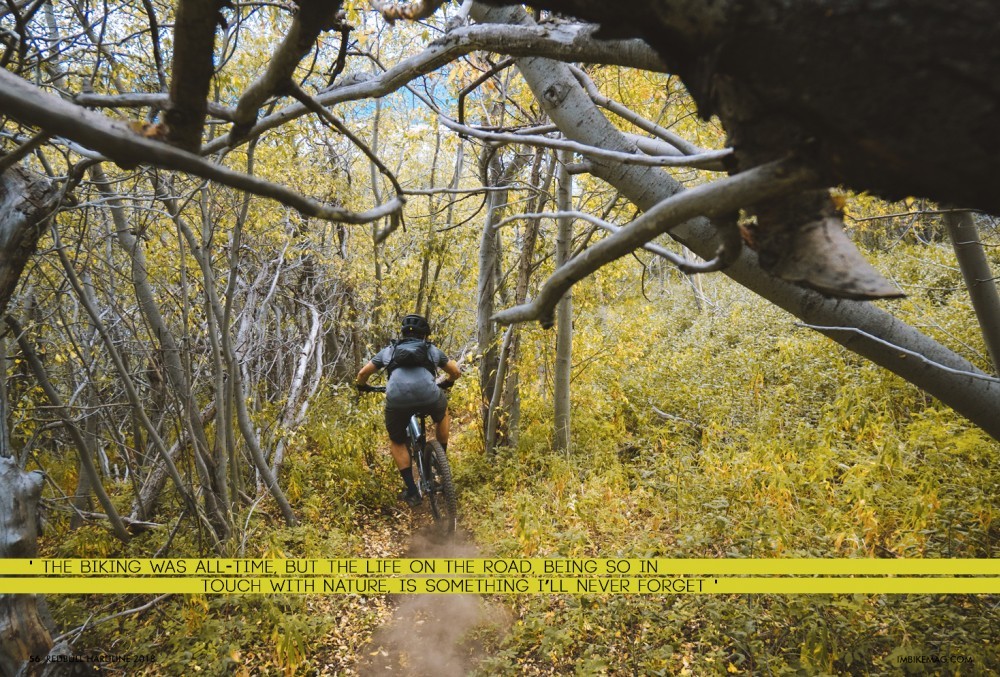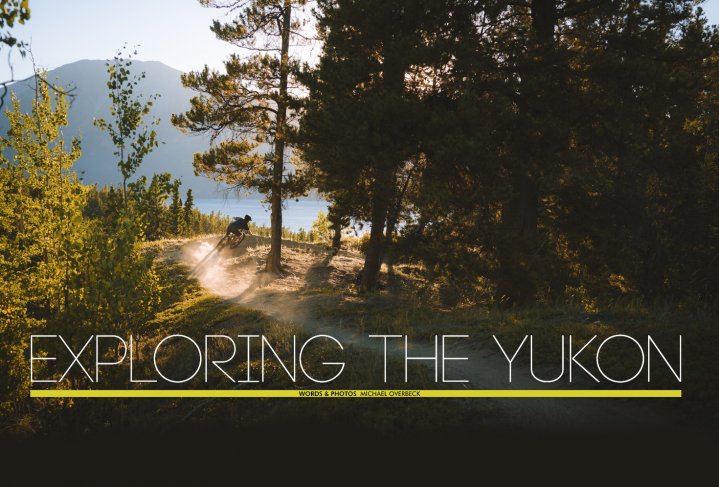
Exploring The Yukon
Issue 57 / Mon 18th Feb, 2019
Having dreamed of this trip for years, Michael Overbeck heads to the Yukon for some true mountain bike adventures. Remote and beautiful, the Yukon offers unrivalled wilderness for those motivated enough to seek it out and discover what's on offer.
I’ve dreamed of making this trip for as long as I can remember. Each summer for the last few years I kept telling myself I’d make the 2400 kilometre drive to Whitehorse, and explore this slice of the Canadian North. On a warm summer morning in Whistler, I loaded up the truck with the necessities: bike, camping gear, and lots of food. Then I drove north.
I opted to take the slightly longer route up towards Dawson Creek. The town lies near the Alberta border and is the official start of the Alaska Highway, otherwise known as Mile 0. Almost immediately after starting on the Alaska Highway, you feel like you are entering a much wilder landscape. Driving two hundred kilometres with little to no gas or food stops became the norm.
On the first day, we saw more than twenty-six bears, hundreds of Buffalo and even a bird that flew into the windshield of the truck. As there’s not too much in terms of roadside attractions (or even towns to stop at for that matter) when I did pass by a small restaurant or shop, it was always a mandatory stop.
After more than 2400 kilometres in four days, I made it to Whitehorse, YK. It’s hard to beat being on the road, but after a long time in the driver seat, it was time to get on the bike. I drove south down the Klondike Highway to the small town of Carcross. Its name originates from years back when the caribou would cross through this area during their annual migration. When most people think of biking in the Yukon, this is likely the first place that comes to mind.
Beyond the incredible network of trails this small town has, the main reason I chose to come here was for the famous Mountain Hero Loop, a forty-seven-kilometre link-up that takes you from the town centre, up and over Montana Mountain and back to the town centre. The start of this trail is a long (and when I say long, I mean really long) climb up an old mining road, with no chance of finding shade anywhere. We managed to get a shuttle a couple of kilometres up the road but still took us a good few hours to reach the alpine.
Once getting up into the alpine, we rode up and down for another ten kilometres on old mining roads, passing by decrepit mining sites with views over Nares and Bennett Lake the whole way. After some more pedalling, we reached the top of the descent; what we had come all this way for. The ride down is a seven and a half kilometre, thousand-metre single track trail taking you down the east side of Montana Mountain. It is by no means the most technical trail, as it was initially built as a mule trail in 1905 to shuttle construction material for the Mountain Hero Tramway. Once on the shores of Nares Lake, you can opt to ride the ten kilometres back into town, or (like us) hitch a ride back into Carcross.
As Carcross is a small town, there was really only one option for après. After a long day of riding in the heat, the obvious choice was some poutine and a beer. After a few days exploring the surrounding area of Carcross and riding the seemingly endless network of trails. I decided to head out for another long ride, this time on the MacDonald Creek Trail.
It is, in many ways, the younger brother to the Mountain Hero Trail. At roughly twenty-four kilometres car-to-car, with a seven hundred metre descent down to the shores of Bennett Lake. This trail had a lot less time in the alpine, but the flowy single track through the sub-alpine forest made up for that. This trail was without a doubt one of the most fun trails I rode on the trip. After a few kilometres into the descent, I noticed some signs of bear activity, which is no surprise in this area. Every few hundred metres I started to see it become more frequent. After yelling out a few times to let the bear know I was coming down the trail, I began to slow down so I wouldn’t give it a scare as I rode around a corner. Lucky for me, I never saw the bear. My guess is it got off the trail once it heard me coming. One thing about the wildlife up North is how little contact it wants with people. Back home in southern British Columbia, most animals are almost too comfortable around people, but here they want nothing to do with you. It feels like you are in a true wilderness.
After a long descent down the MacDonald Creek Trail, we hopped onto a seven-kilometre cross-country trail that took us along the shores of Bennett Lake. The entire way we had views out over the lake while passing by some old mining cabins and machinery. These derelict and abandoned buildings and tools truly gave us a sense of the history of this place. I decided to get back on the road and drive a few hundred kilometres west to Haines Pass. This was an area I had heard little about, especially in terms of bike trails. After talking with a lady in a parking lot in Carcross, she mentioned a trail you’re able to bike on that takes you to the Samuel Glacier.
This sliver of land was actually part of British Columbia, lying between southwest Alaska and the Yukon. A large part of this area is located within the Tsatshenshini-Alsek Provincial Park, a park I hadn’t heard of until I saw the sign while driving in. The trail into the Samuel Glacier was mostly an old mining road with a few river crossings, taking you eleven kilometres through sub-alpine terrain and ending in an open meadow overlooking the Samuel Glacier. Having never seen photos of this place, it was refreshing to be completely surprised and blown away by the landscape around every corner. It was endless rolling hills, small streams, and glaciated peaks in the distance.
Back home, I frequent a lot of the same places, generally knowing the lay of the land before I step foot in it. It was incredible to enter a new area where I didn’t know what to expect. There were no other people, and I had no presupposed idea of the region; a genuinely wild landscape. After making the drive all the way up to Haines Pass, I couldn’t resist but spend a few days camped out up there. I put the bike aside for a bit and decided just to enjoy the scenery and the apparent never-ending sunshine.
After more than two weeks driving and riding my bike around the Yukon, looking for the best spots to camp and ride my bike, I feel like I’ve barely even scratched the surface of this beautiful place. I lucked out with twenty hours of sunshine each day, open roads, and world-class riding. Although, this article wouldn’t be complete without mentioning the areas I visited off the bike, including the camps and sights. Most of my nights consisted of driving down old mining roads that looked to be unused for a decade or more. I’d generally drive down one long enough to find a spot on the edge of a river with a mountain backdrop.
Nights at camp consisted of making dinner on the bumper, writing, taking photos of the sun setting, and enjoying the stillness of this place. When you’re on the road, especially in a place like this, life moves at a different pace. It can be hard to get into the rhythm of it all at first. By the end, it felt as normal as ever. I stopped missing cell service, quit compulsively checking my email, and a shower in a lake was the usual daily highlight. Don’t get me wrong, the biking was all-time, but the life on the road, being so in touch with nature, is something I’ll never forget, and something I expect myself to be chasing for many years to come.
By Michael Overbeck



